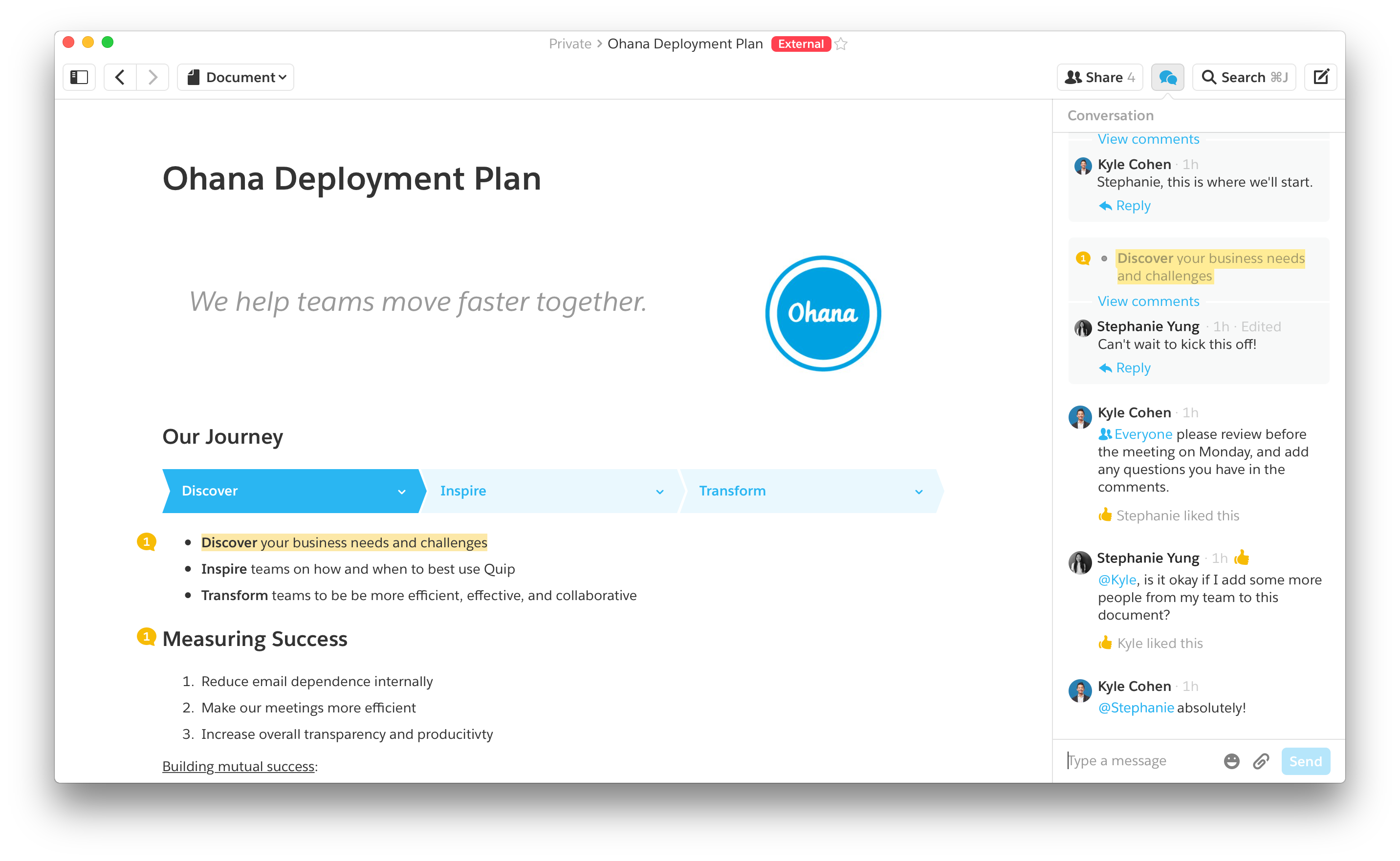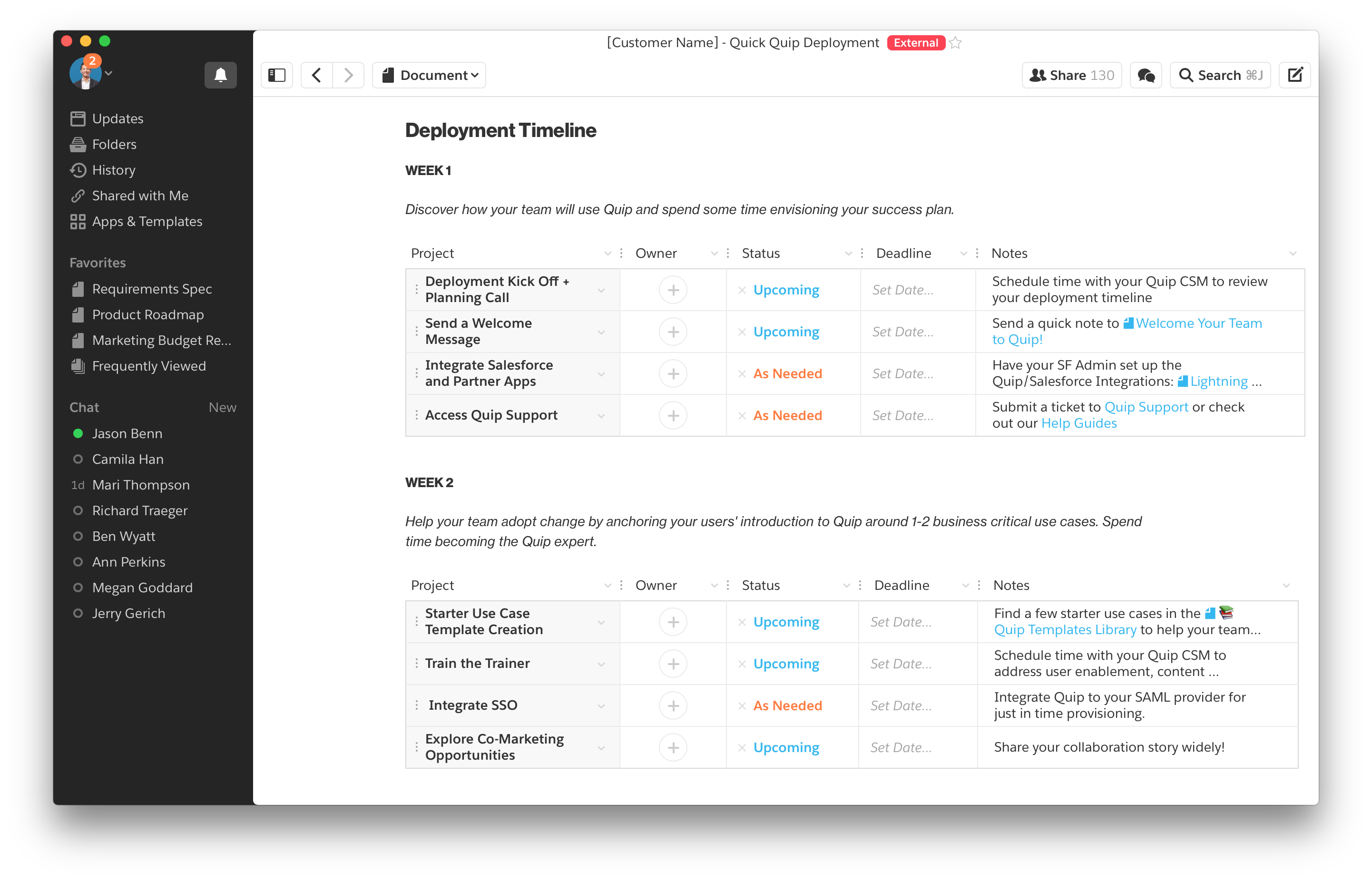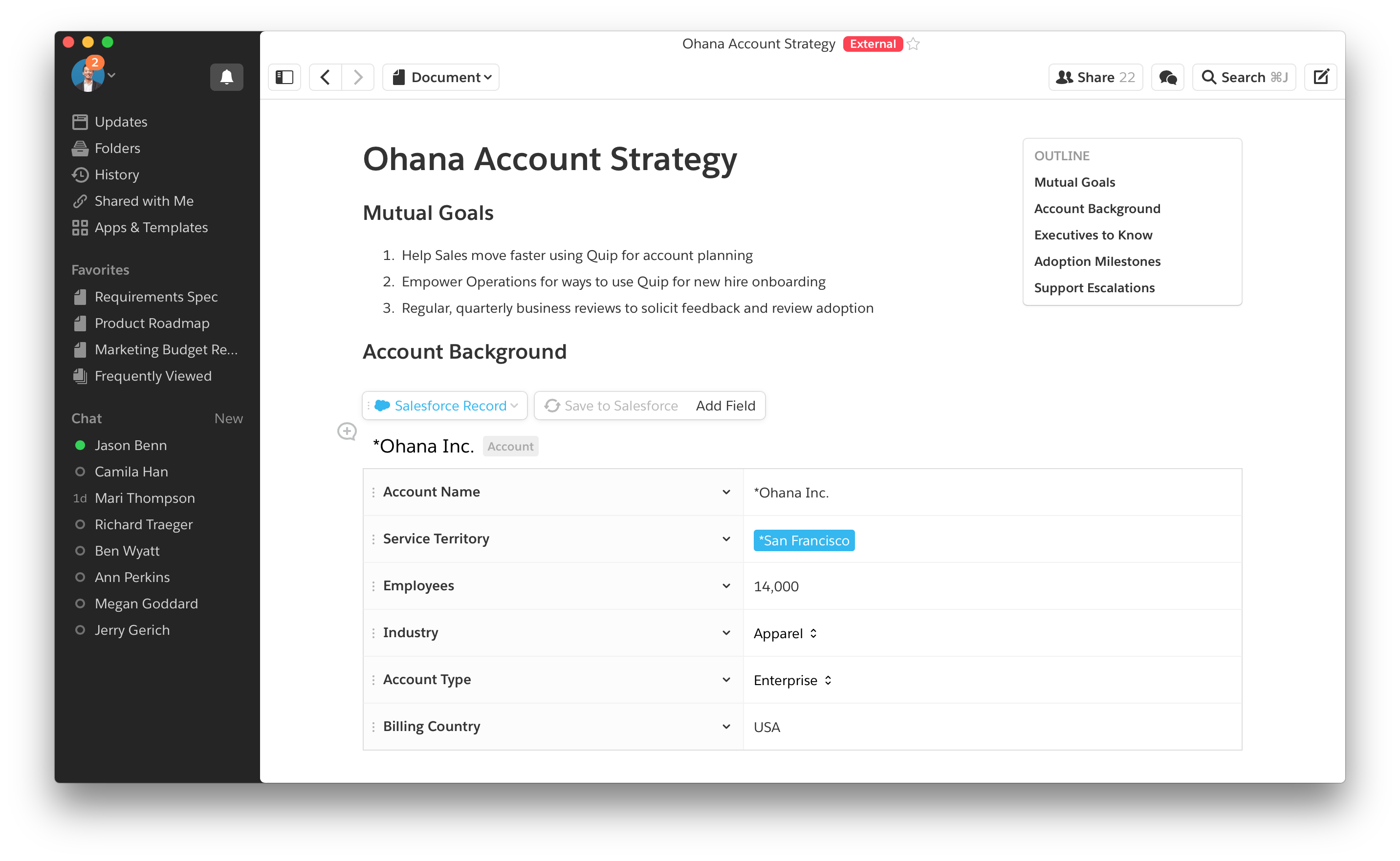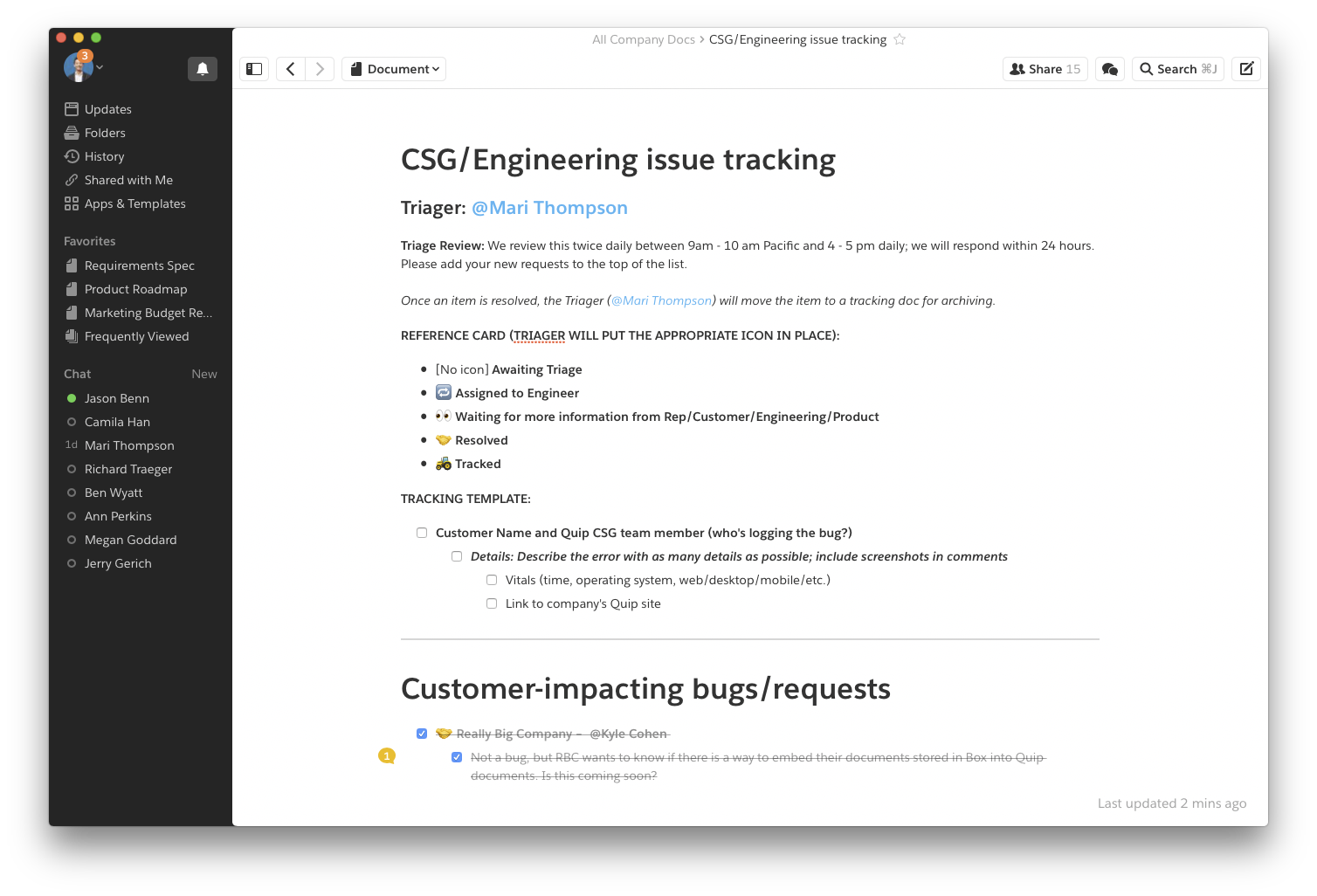Dispatches from a power user: Quip for customer success
On our last installment of Dispatches From a Power User, we featured Quip product marketing manager Ryan Anderson. This week, we're sharing the story of Stephanie Yung, a customer success manager on the Quip team. Read on to see how she leverages Quip and Salesforce every day to help create amazing customer relationships.

When companies adopt Quip, we don't just give them a thumbs up and wish them luck. There's a whole team focused on making sure new Quip customers—as well as customers who are expanding their use of Quip within an organization—are happy and successful. That's where people like me come in. As a customer success manager, I'm a consultative product expert responsible for managing the health of a portfolio of customers. I advocate for our customers, educate new users, and ensure that teams are getting value from their Quip investment. Here are a few ways Quip helps me do that.
Engaging directly with our customers
Our favorite and most successful way to get customers comfortable with Quip is by having them use Quip to help manage their deployment. Since Quip documents and spreadsheets can be shared externally, it's easy to bring new customers directly into the fold by sharing Quip docs with them.
Using Quip to teach Quip
We use Quip to manage the onboarding process, which gives our customers a unique opportunity to learn the product organically. As more stakeholders get added, these documents become the central hub for us to collaborate with our customers during the initial onboarding phase. It's a great way for us to hold each other accountable, too. A fun bonus is that the folks running the deployment on the customer side become fast Quip experts. We use this “train the trainer” mentality to help the rest of the company adopt a new way of working.

Tracking towards success with Live Apps
The Project Tracker Live App is a critical component of these deployment documents. It gives the customer an at-a-glance breakdown of what the upcoming steps are, who's accountable, and when to expect the work to happen. I use a new project tracker for each week, and add a short description of what the overall goal of that week is.

Partnering with sales
Another part of my job is managing customer adoption and renewals. At Quip, it's the Customer Success Group (CSG) that manages this process, and we use Salesforce records right in Quip to keep tabs on things. With the Salesforce Record Live App embedded right in Quip, we can bi-directionally pull information from Salesforce into Quip and update changes to an account directly in my Quip doc.

Based on an account's health, and when their next renewal is, the structured data helps keep CSMs honest and form as an anchor to the right adoption approach. Does this customer need to be re-engaged with the product? Should we create some customized resources for them? Or perhaps they're power-using their days away, and it's time to explore co-marketing opportunities.
Working with engineering
Another part of being an advocate for Quip customers is partnering closely with our product and engineering teams. Through these channels, I'm able to give a voice to our customers' product feedback, and escalate bugs that have the potential to impact our customers' businesses.
Using Quip to track and manage product feedback is awesome for many reasons. For starters, it creates a ton of visibility into our customers' thoughts and feelings, for everyone ranging from our CEO, to our summer interns. One example of this is the document we've created to triage bugs that are impacting customers. Our engineering staff takes turns rotating through shifts as triager for this doc. When the bug is fixed, the item gets checked off. Since this doc is shared with the entire company, which creates a sense of community around the customer experience, and fosters a sense of action around getting things fixed.

As a customer success manager, I have to stay engaged with lots of people at the same time, all of whom have unique needs and problems. Quip helps me stay on top of everything that’s going on because it’s so flexible, and engages the rest of my team easily. And the fact that I’m able to share anything in Quip externally with our customers means we can provide value for them faster and more thoroughly.
Get started
Check Quip out and start creating better relationships with your customers today. If you don’t have a Quip site yet, that’s easy to fix — head to quip.com for your free trial.
